Local Weather Report and Forecast For: Kurnool Dated :Oct 31, 2020
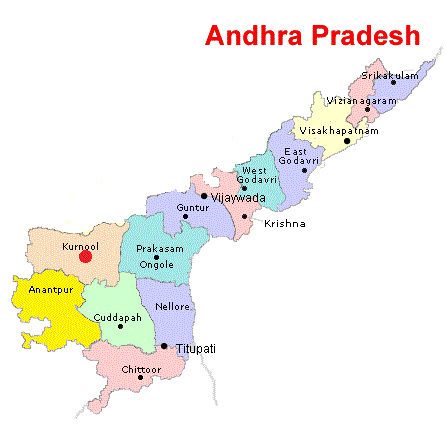
|
|
|||||||||||||||||||||||||||||||||||||||||||||
|
||||||||||||||||||||||||||||||||||||||||||||||
\
NFCL thankful to beloved SIRS-Shri K.S RAJU, Shri US JHA Chairman, Shri RAHUL RAJU–MD , SHRI RM DESHPANDE, Shri R.RAGHAVAN, Shri GVS ANAND, SHRI VIJAY KUMAR (Site Incharge), Shri G.B.Rao Shri PVSN Raju, Dr. V. Sunny John, Shri KS Gunasekhar , Shri IVSN Raju.Shri MSRKS Prasad, Shri D.Mohanty , Shri Uma Maheswar Rao, Shri T. Govind Babu, Shri. LVV RAO, Shri. DV Reddy, Promotion- EHSQ-Industry by Dr. A.N. GIRI- SPECIAL THANKS TO BELOVED DYNAMIC MD-SHRI RAHUL RAJU SIR-25.3 LAKHS EHSQ Viewed.
Local Weather Report and Forecast For: Kurnool Dated :Oct 31, 2020

|
|
|||||||||||||||||||||||||||||||||||||||||||||
|
||||||||||||||||||||||||||||||||||||||||||||||
India has achieved a significant milestone in its fight against COVID. The active caseload has fallen below 6 lakh for the first time in nearly three months (85 days). India has registered 5.94 lakh active cases today. The active caseload was 5.95 lakh on 6th August.
Presently the active cases comprise only 7.35% of the total positive cases of the country standing at 5,94,386. This has strengthened its trend of steady decline.
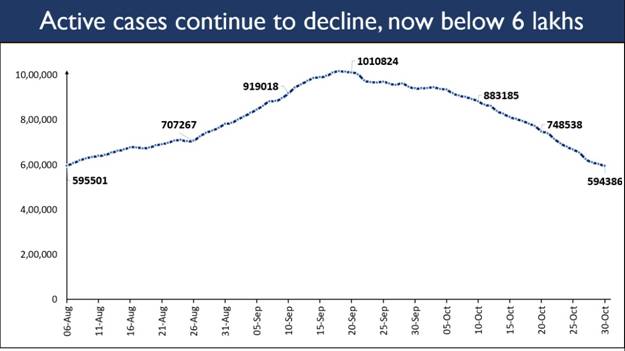
The trajectory of the active caseload across different States/UTs has been diverse indicating their efforts and gradual progress in their fight against the global pandemic.
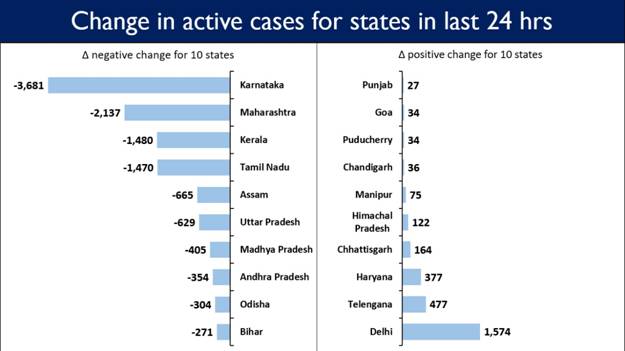
India has also sustained its high number of recoveries. The total recovered cases stand at 73,73,375. India continues to be the topmost country with maximum number of recovered cases globally. The difference between active cases and recovered cases is consistently increasing and stands at 6,778,989 today.
57,386 patients have recovered and discharged in the last 24 hours whereas the new confirmed cases are 48,648. The national Recovery Rate has progressed to 91.15%.
80% of the new recovered cases are observed to be concentrated in 10 States/UTs .
Kerala has contributed the maximum with more than 8,000 to the single day recoveries followed by Maharashtra and Karnataka with more than 7,000 recoveries each.
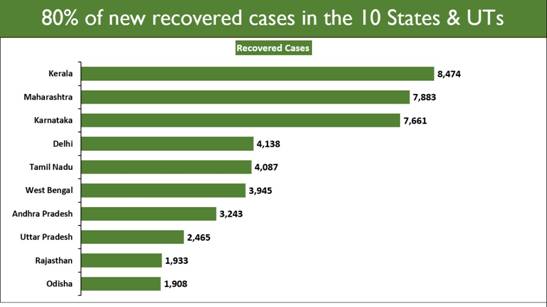
48,648 new confirmed cases were recorded in the last 24 hours.
78% of these are from 10 States and UTs. Kerala is still reporting a very high number of new cases with more than 7,000 cases followed by Maharashtra and Delhi with more than 5,000 cases each.
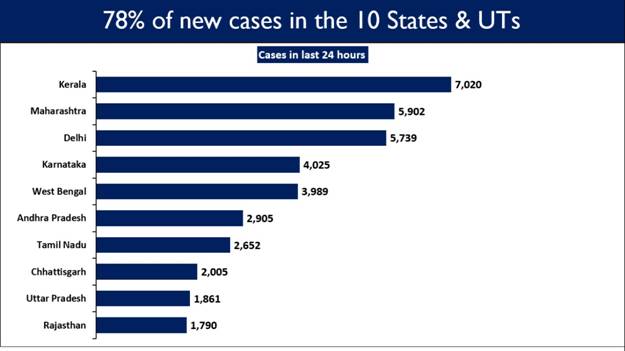
563 case fatalities have been reported in the past 24 hours. Of these, 81% are concentrated in ten States/UTs.
Maharashtra has reported the highest single day deaths (156 deaths) followed by West Bengal with 61 cases.
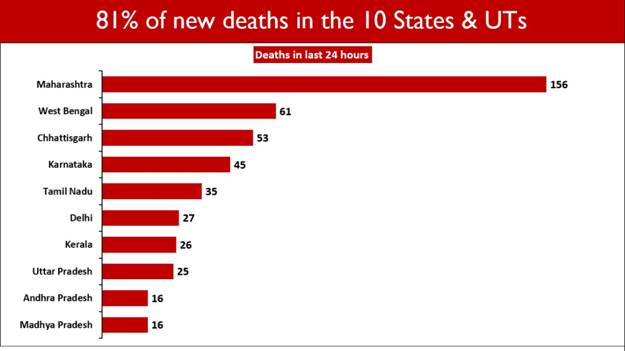
India has performed remarkably on fulfilling WHO’s advise of 140 tests/day/ million population. In its Guidance Note on “Public Health Criteria to Adjust Public Health and Social Measures in the Context of COVID-19” WHO has advised this strategy for comprehensive surveillance for suspected cases.
In another row of achievements, 35 States/UTs have exceeded the advised number of tests. The national average of tests per day per million population stands at 844. The figure for Delhi and Kerala has exceeded 3,000.
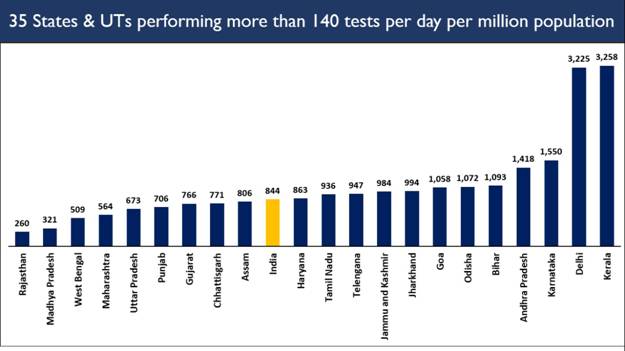
****
MV/SJ

Kheyti is promoting the use of greenhouses as an alternative to traditional open-field agricultural practices, with the benefits including protection from changing weather conditions and crop pest and diseases (© Pexels)
In the south Indian region of Hyderabad, a non-profit called Kheyti has developed an affordable solution to income stability and climate-resilient crop production for smallholder farmers and SMEs (small and medium enterprises) – greenhouses.
The organisation founders spent countless hours meeting with Indian farmers to understand the range of issues threatening farming communities. “When we bucket the problems, there are two broad challenges: climate-based risks like heat, rain and pests – and distribution-based risks like poor linkages to inputs, finance, knowledge and markets,” said Sathya Raghu Mokkapati, one of Keyti’s co-founders.
Kheyti initially aimed to target both issues, but after a series of initial failures at promoting stable yields and incomes via open-field farming, the organisation focused on promoting the use of greenhouse agriculture and making it more accessible to smallholder farmers.
The greenhouse program is still in the process of being tested, with pilot groups across India showing promising results. Through preliminary studies of the pilot, farmers have been shown to grow seven times more food using 90% less water when using greenhouses compared to traditional open field practices. The use of greenhouses also protects crops from environmental factors, such as pests, resulting in the reduced need for inputs such as pesticides and fertilizer. This in turn, benefits the farmers with reduced agricultural input costs, promoting financial stability and resilience at the same time as increasing their crop yields.

Kheyti are targeting numerous points of agriculture value chains across India to ensure that smallholder farmers are equipped to tackle the growing threats to food security (© Pexels)
As well as promoting access to greenhouses, Kheyti also supports numerous points in agriculture value chains. Including accessibility of seeds, education and provides mobile phones to farmers to use as a direct link to Kheyti. In terms of market access, the organisation partners with market retailers to sell produce directly from farmers to retailers.
In India, around 82% of farmers are smallholders, meaning they own less than 5 acres of land. The issue of land size was heavily considered in Kheyti’s greenhouse system, resulting in the design of greenhouses which use just 2% of the average farmer’s land but can be expanded if wanted. This allows farmers to use the majority of their land for other crop practices and to diversify away from producing one type of crop.
A conventional greenhouse in India can cost up to $30 000, which is often too expensive for the average farmer. Kheyti’s greenhouses cost a fraction of this at $2,500 which can be financed via Kheyti’s partnerships with local banks. This financial model is designed to promote access to farming tools which would normally be out of reach of smallholder farmers. Public sector banks in India often refuse loans to smallholder farmers, forcing them to seek funds from private lenders, commonly charging excessive interest rates of more than 60%.
“The largest challenge for me is that the farmers are not getting the loans on time. Today on average, farmers will have to wait a month to get a loan. We want to make this process simpler and faster,” says co-founder Sathya Raghu Mokkapati.
The greenhouse finance model was successfully undertaken within a pilot group, notably without government subsidies. The hopes are for the greenhouse financing to be implemented by farmer-owned collectives and businesses in future to promote both the sustainability of the system and transparency throughout the farming community.
“Replication and scale are the next steps ahead of us. We want to reach a million farmers in the next decade, including global expansions to countries in South Asia and Africa.”
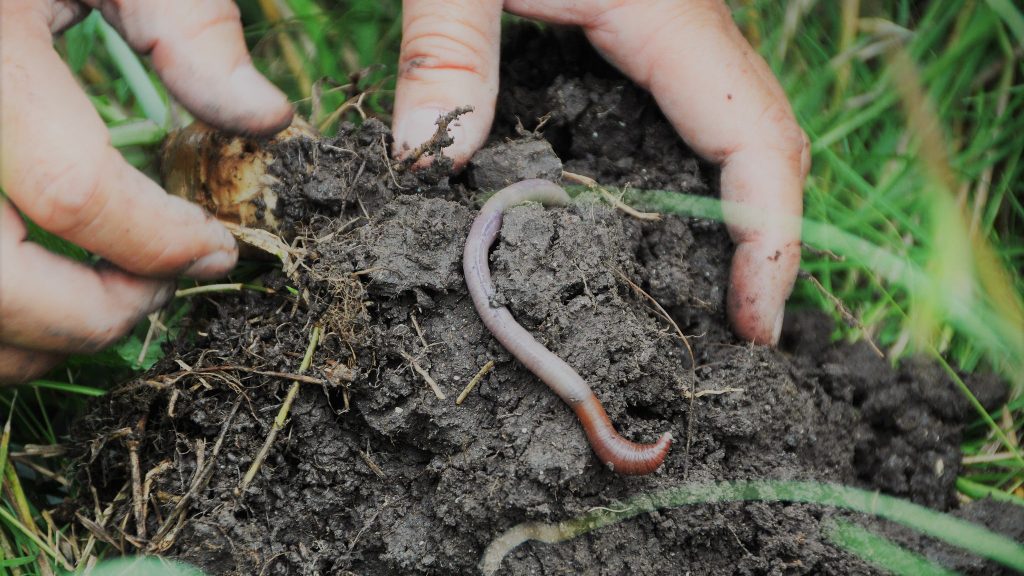
Sustainable agriculture means the production of food from plants or animals using different agricultural techniques that protect communities, the environment, and animal welfare. The extensive use of chemical pesticides and fertilizers to boost crop yields may have resulted in good yields and productivity, but it has caused the efficiency of the soil to deteriorate throughout the world day-by-day. This modern agricultural practice has caused a steep fall in the biodiversity (above and below the ground) associated with cropland ecosystems.
Earthworms are one of the most important soil animals; they have the capability to maintain the fertility of the soil and therefore play a key role in sustainability. They are also known as farmer’s friend, ploughman of the field, intestines of the earth, ecological engineers, and biological indicators. Earthworms are functionally very important and diverse, and therefore potentially useful for the management of biodiversity and ecosystem services.
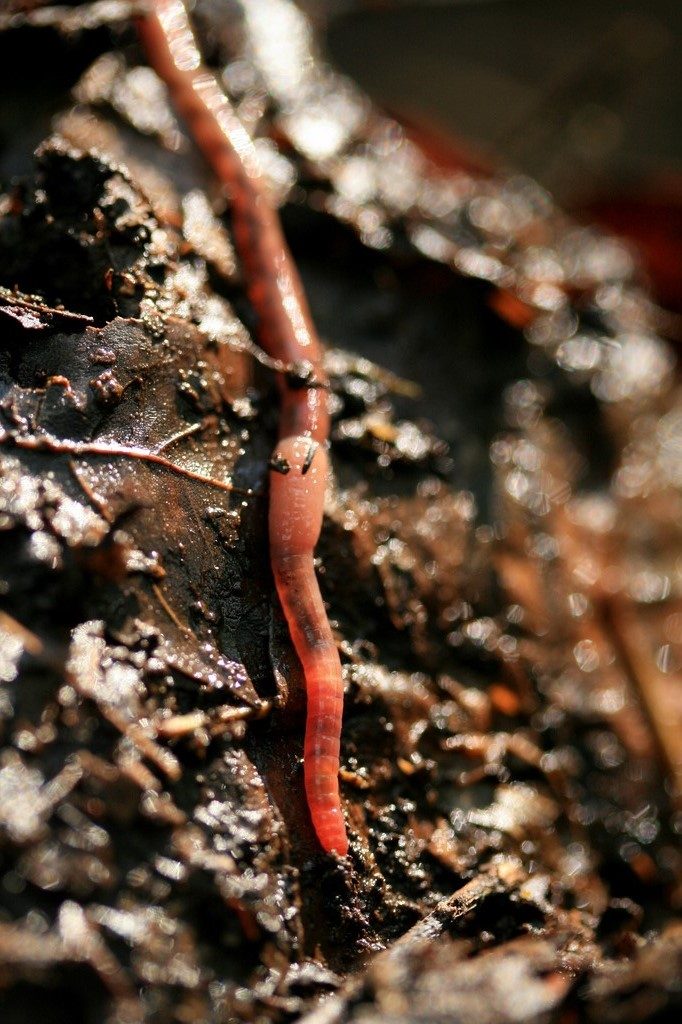
Earthworms maintain the physico-chemical properties of the soil by converting biodegradable materials and organic wastes into nutrient-rich products, emerging from their burrows to deposit the fecal matter (vermicast) on the surface. Earthworms stimulate microbial activity, mix and aggregate the soil, soil water content, and water holding capacity. The mutual action of earthworms and microbes brings faster decomposition as the earthworm’s condition, aerate, fragment, and enhance the surface area of the organic matter for microbial action. They also increase litter decomposition, soil organic matter dynamics, nutrient cycles, promote plant growth, and reduce some soil-borne diseases.
Earthworm burrows act as a channel for plant growth and as pathways for root elongation, especially in compacted zones typically found in deeper soil layers. It makes the soil porous, increasing the water infiltration rate and reducing soil erosion. Some studies even report that earthworms release certain metabolites, such as vitamin B and vitamin D into the soil, which are good for growth of plants. Various studies also report that earthworms are able to convert barren land into fertile land and increase the agriculture output.
Vermicompost and vermiwash produced from various organic material/waste with the help of different earthworm species plays an important role in organic agricultural systems i.e sustainable, eco-friendly farming, nutrient availability, pest protection, soil fertility improvement. This vermicast acts as a buffer; it has a significantly lower volatile solid content and high nitrogen, phosphorus, and potassium content, which is easily available for the plant.

The presence of humic acids and plant growth hormones in vermicast can increase crop yields in both natural and managed ecosystems. The application of vermicompost with chemical fertilizers and integrated nutrient management reduces the use of chemical fertilizers in the field. The use of these organic amendments can improve the growth of plants in a range of ways; number of leaves, seed germination, root biomass, fruit abundance, number of seeds, and overall yield. It also improves the nutritional quality of crops by increasing sugar, oil and protein compounds.
It is vital that these little creatures in the soil are preserved at any cost to ensure they continue to provide their invaluable services to humankind.
Jaswinder Singh is an Associate Professor in the Department of Zoology at Khalsa College Amritsar. He is the author of ‘Role of Earthworm in Sustainable Agriculture’, in Sustainable Food Systems from Agriculture to Industry.
The Fertilizers And Chemicals Travancore Limited (FACT) received third Muriate of Potash (MoP) ship at Tuticorin port in Tamil Nadu on Monday. Bagging of the 27500 MT product is in progress.
With this shipment, total MoP import for the year reached 82000 MT. FACT a PSU under the Ministry of Chemicals and Fertilizers had placed orders for import of three shipment of MoP.
MoP along with FACT's prime product FACTAMFOS (NP 20:20:0:13) is a preferred fertilizer combination by the farmers of South India.
Company is planning for two more parcels during this year.
Earlier company has imported two shipments of MoP & one parcel of NPK (16:16:16) to meet the demand of farmers during Khariff.
FACT one of the first large scale fertilizer manufacturers of the country, is maintaining good performance in manufacturing & marketing of fertilizers during the year.
India has achieved several significant milestones in its fight against COVID. The new confirmed cases in the last 24 hours have fallen below 36,500 (36,470) for the first time in three months. The new cases were 34,884 on 18th July, 2020.
With a high number of COVID patients recovering every day and the sustained fall in the mortality rate, India’s steady trend of registering dipping active cases continues.
In another achievement, the active cases have drastically declined to 6.25 lakh. The total positive cases of the country are 6,25,857 and now comprise merely 7.88% of the total cases.
These encouraging outcomes are the result of a collaborative, focussed and effective implementation by States/UTs under the Centre's strategy of comprehensive and consistently high countrywide testing, prompt and effective surveillance and tracking, quick hospitalization and effective adherence of the Standard Treatment Protocol issued by the Union Government. This success also owes to the selfless service and dedication of doctors, paramedics, frontline workers and all other COVID-19 warriors across all parts of the country.
35% of the total Active Cases in the country today are being reported from only 18 districts.
The slide in active cases in supplemented by an exponential rise in the recoveries. The total recovered cases have crossed 72 lakhs (72,01,070). This has widened the gap between active cases and recovered cases and stands at 65,75,213 today.
63,842 patients have recovered and discharged in the last 24 hours. The national Recovery Rate has further grown to 90.62%.
78% of the new recovered cases are observed to be concentrated in 10 States/UTs .
Maharashtra is leading with more than 9,000 single day recoveries followed by Karnataka with more than 8,000 recoveries.
76% of the new confirmed cases are from 10 States and UTs.
Kerala and West Bengal have contributed the maximum to the new cases with more than 4,000 cases each. Maharashtra, Karnataka follow with more than 3,000 new cases.
488 case fatalities have been reported in the past 24 hours. Of these, nearly 80% are concentrated in ten States/UTs. The deaths are below 500 for second consecutive day.
Maharashtra has reported the maximum single day deaths (84 deaths).
India’s case Fatality Rate stands at 1.50%.
****
Local Weather Report and Forecast For: Kakinada
Dated :Oct 16, 2020

Past 24 Hours Weather Data
Maximum Temp(oC) (Recorded. on 16/10/20)
33.3
Departure from Normal(oC)
1
Minimum Temp (oC) (Recorded. on 16/10/20)
24.4
Departure from Normal(oC)
-1
24 Hours Rainfall (mm) (Recorded from 0830 hrs IST
of yesterday to 0830 hrs IST of today)
2.2
Relative Humidity at 0830 hrs (%)
82
Relative Humidity at 1730 hrs (%) (Recorded. on 16/10/20)
76
Todays Sunset (IST)
17:38
Tommorows Sunrise (IST)
05:54
Moonset (IST)
17:31
Moonrise (IST)
05:10
7 Day's Forecast
Date
Min Temp
Max Temp
Weather
16-Oct
24.0
29.0
![]()
Generally cloudy sky with Light Rain or Drizzle
17-Oct
24.0
29.0
![]()
Generally cloudy sky with Light Rain or Drizzle
18-Oct
24.0
29.0
![]()
Generally cloudy sky with Light Rain or Drizzle
19-Oct
24.0
29.0
![]()
Generally cloudy sky with Light Rain or Drizzle
20-Oct
25.0
30.0
![]()
Generally cloudy sky with Light Rain or Drizzle
21-Oct
25.0
30.0
![]()
Generally cloudy sky with possibility of rain or Thunderstorm
22-Oct
25.0
30.0
![]()
Generally cloudy sky with possibility of rain or Thunderstorm

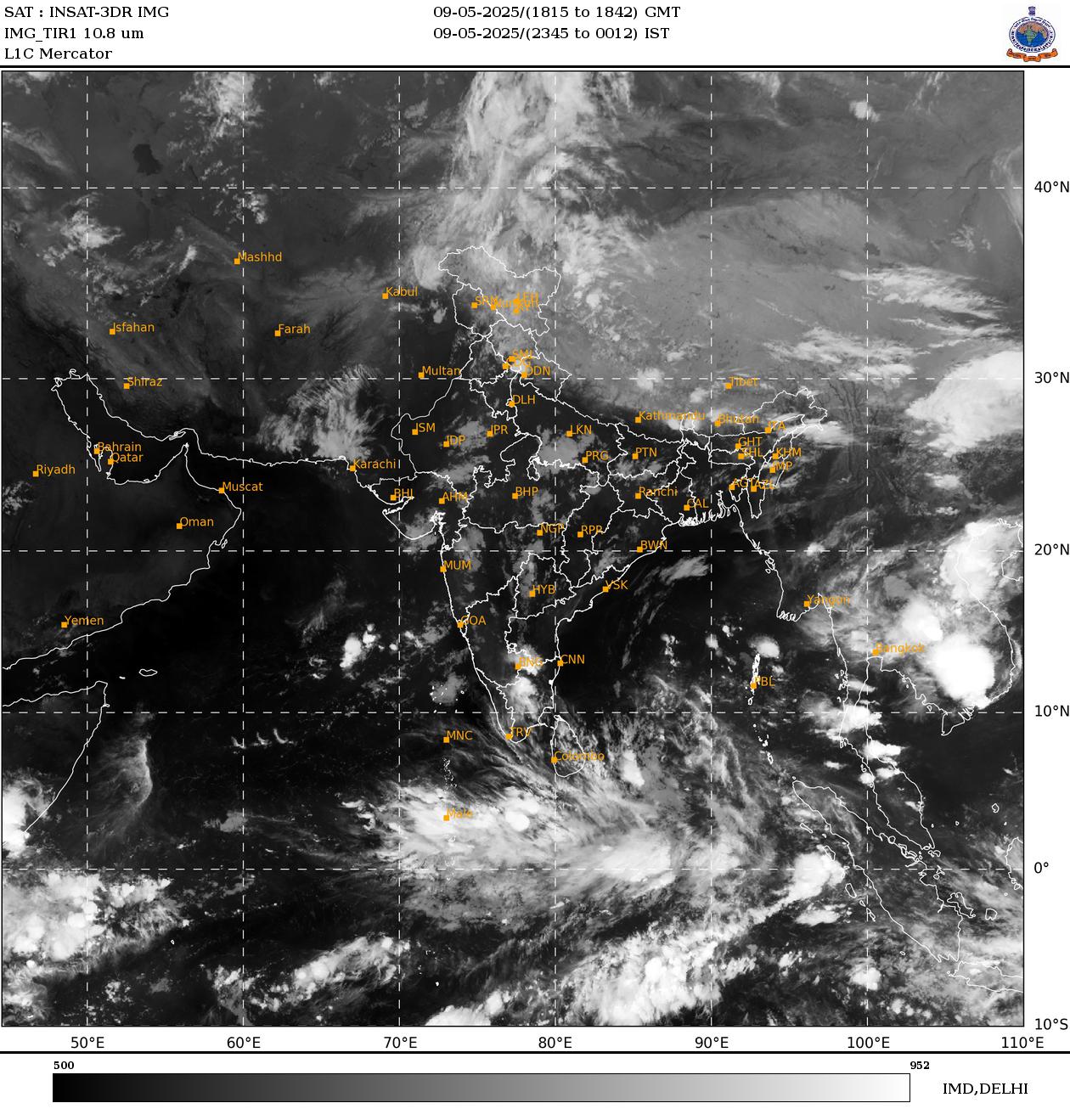

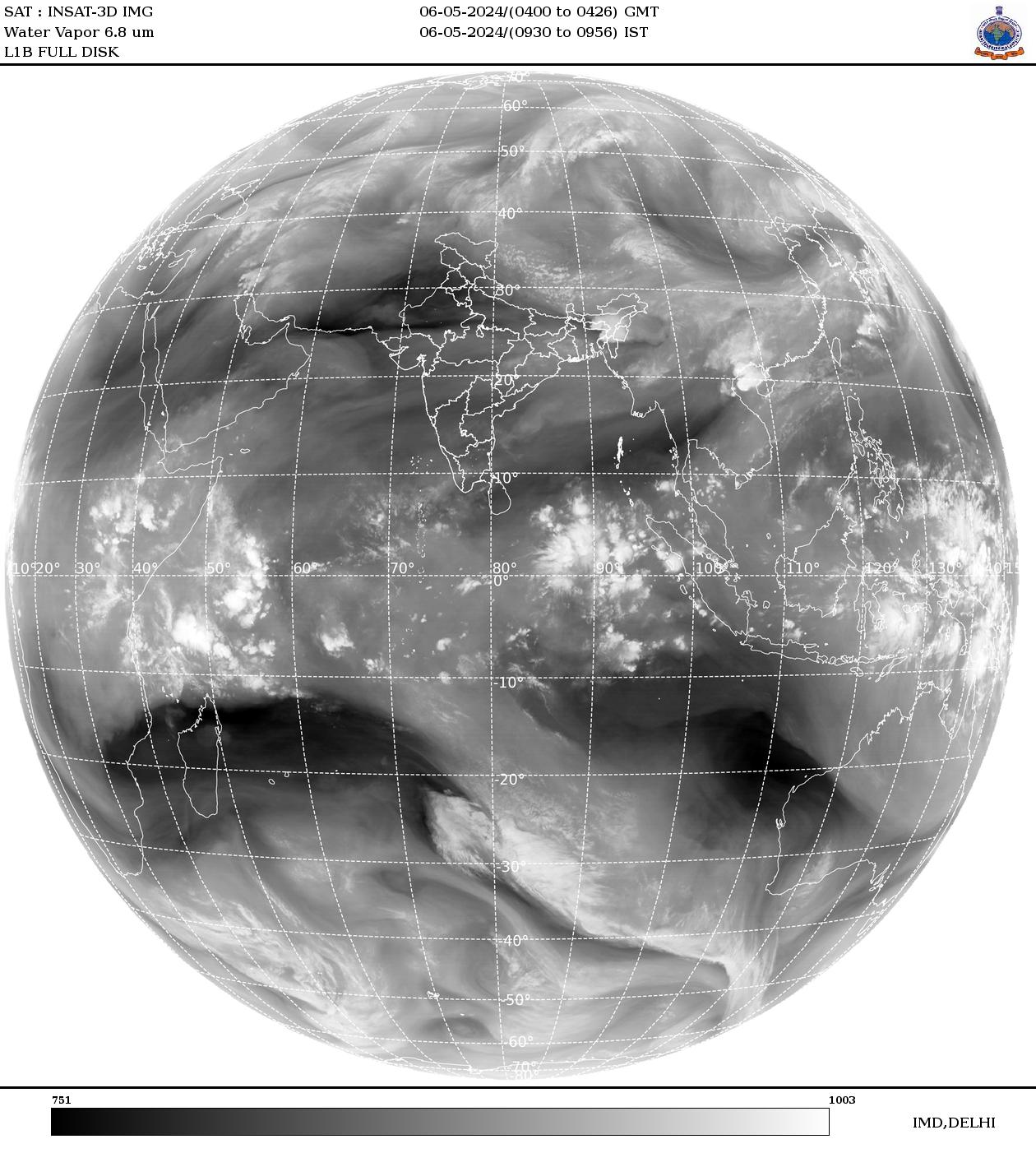
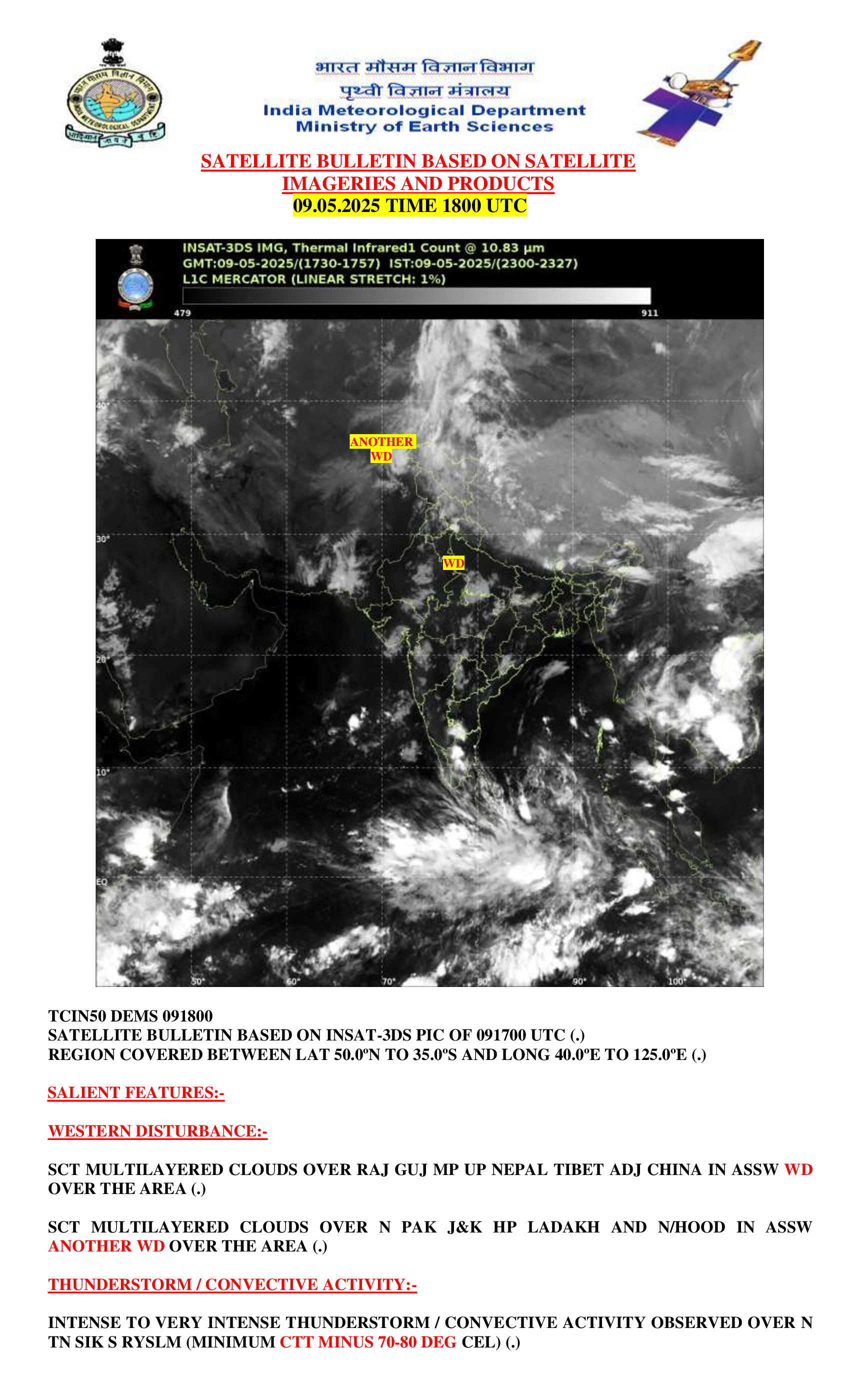
India is reporting a progressively high increase in the recoveries and a persistent decline in the percentage active cases. As a result, the doubling time of the infection has sharply improved. It is now almost 73 days (72.8 days). This indicates a substantial fall in the daily New Cases and the consequent increase in time taken to double the Total Cases.
India has come a long way from registering a doubling rate of 25.5 days in mid August to now registering a doubling rate of nearly 73 days. This is the result of collaborative action by States/UTs under the Centre's strategy of comprehensive and high countrywide testing, prompt and effective surveillance and tracking, quick hospitalization and effective adherence of the Standard Treatment Protocol issued by the Union Government. This is also the combined outcome of the selfless service and dedication of doctors, paramedics, frontline workers and all other COVID-19 warriors.
The countrywide growing awareness regarding adoption of COVID appropriate behaviour has aided in curbing spread of the infection and seeking timely treatment.
81,514 new recoveries were added in the last 24 hour. With this, the total number of recoveries are nearly 64 Lakh (63,83,441). Higher number of single day recoveries is also reflected in the continuous increase in the national recovery rate, which has crossed 87% and now is 87.36%.
10 States/UTs account for 79% of the new recovered cases. Maharashtra has contributed more than 19,000 to the single day recoveries followed by Karnataka with more than 8,000 recoveries.
Presently the active cases comprise 11.12% of the total positive cases of the country standing at 8,12,390. They have been below the 9 lakh mark for a week now.
67,708 new confirmed cases were registered in the last 24 hours in the country.
77% of new confirmed cases are from 10 States and UTs. Maharashtra has the highest number with more than 10,000 cases followed by Karnataka with more than 9,000 cases.
680 case fatalities have been reported in the past 24 hours. These have been sustained below the 1000 mark since 12 days.
Of these, nearly 80% are concentrated in ten States/UTs.
More than 23% of new fatalities reported are from Maharashtra (158 deaths).
In order to step up efforts for ensuring better air quality, 50 teams of Central Pollution Control Board (CPCB) have beendeployed from today to make extensive field visits in Delhi-NCR towns.
Addressing the nodal officers of the teams in New Delhi today, Union Environment Minister, Shri Prakash Javadekar said that during the current times of COVID the members of the team are no less than Corona Warriors as they will be visiting and giving feedback from the ground, which will help in mitigating Air pollution.

Shri Javadekar said that around 95 percent of the pollution in the city, is due to local factors like dust, construction and biomass burning and the share of stubble burning is only around 4 percent as on date.
On spot reporting of major air polluting sources such as major construction activities without proper control measures, dumping of garbage & construction waste alongside the roads and on open plots, unpaved roads, open burning of garbage/industrial waste, etc. will be done by these teams using the SAMEER App.
The teams will visit Delhi and NCR towns - Noida, Ghaziabad, Meerut in Uttar Pradesh; Gurugram, Faridabad, Ballabgarh, Jhajjar, Panipat, Sonepat in Haryana; and Bhiwadi, Alwar, Bharatpur in Rajasthan. These teams will specifically focus on hotspot areas where the problem is aggravated.
Feedback on polluting activities will be shared with concerned agencies through an automated system, for quick action. Details will also be shared with State Governments. This will help in taking timely actions and monitoring at appropriate levels by the concerned agencies.
A Central Control Room at CPCB Head Quarters has been made functional for keeping track of pollution levels on hour to hour basis and overall coordination with State agencies. In addition, district wise nodal officers have been appointed for better management and coordination with teams.
Air quality in winter season is a major environmental concern in Delhi and NCR region. Various efforts are being taken since past five years for air quality management in the region. Although gradual year on year improvement in air quality has been observed, a lot needs to be done.